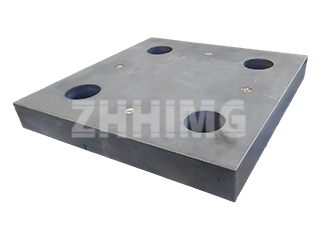Precision granite has long been recognized as one of the most reliable materials for metrology and high-accuracy machine structures. Compared with cast iron or steel, high-grade granite offers exceptional dimensional stability and long-term accuracy, making it ideal for reference surfaces, machine bases, linear guide supports, and critical components used in coordinate measuring machines, laser interferometers, CNC machining equipment, and semiconductor inspection systems.
One question often raised by users is why precision granite components are coated with a thin layer of oil before shipment, and why oiling is recommended when the equipment will remain unused for an extended period. Since granite does not rust, the oil is clearly not for corrosion prevention. Instead, the protective film serves a different and very practical purpose: safeguarding the working surface accuracy.
Granite components are manufactured to extremely tight tolerances, and their surfaces must remain free from dust, abrasive particles, and other contaminants. Even a small amount of fine debris can affect measurement accuracy, and dry wiping such particles directly from the surface can cause micro-scratches. While granite is highly resistant to deformation and does not form burrs like metal, deeper scratches on the precision surface can impact performance and may require re-lapping or repair.
By applying a light oil film—commonly transformer oil or a 1:1 mixture of machine oil and diesel—the surface becomes much easier to clean. Dust and small particles adhere to the oil rather than to the stone itself, and can be removed simply by wiping off the film. This reduces the risk of dragging abrasive particles across the working surface and preserves the long-term integrity of the reference plane. For equipment stored for long periods, the oil film is particularly important because dust accumulation increases over time. Without oil, dry cleaning may leave visible marks or scratches that compromise measurement accuracy.
During manufacturing, precision granite components often require additional machining to integrate them with other mechanical systems. Depending on customer drawings, the granite structure may include threaded inserts, T-slots, counterbores, or through-holes. Each insert is bonded in place after carefully machining the granite to the specified dimensions, and the positional tolerances must be tightly controlled to ensure proper assembly with mating parts. A strict manufacturing process—covering drilling, bonding of metal bushings, and final surface finishing—ensures that all geometric requirements are met and that the component maintains its accuracy after installation.
High-quality granite offers several significant advantages for precision engineering applications. It is naturally stable, with internal stresses released through long geological aging. It is resistant to corrosion, moisture, and most chemicals. Its low thermal expansion coefficient minimizes accuracy changes due to temperature fluctuations. And unlike metal surfaces, minor impacts on granite result in small pits rather than raised burrs, so the reference plane is not distorted.
For these reasons, granite continues to play an essential role in modern metrology, semiconductor equipment, and ultra-precision manufacturing. Proper handling—such as applying an oil film before shipment or long-term storage—helps ensure that each precision granite component maintains its performance from the factory to the end user, supporting reliable measurement and high-accuracy production across a wide range of industries.
Post time: Nov-21-2025

